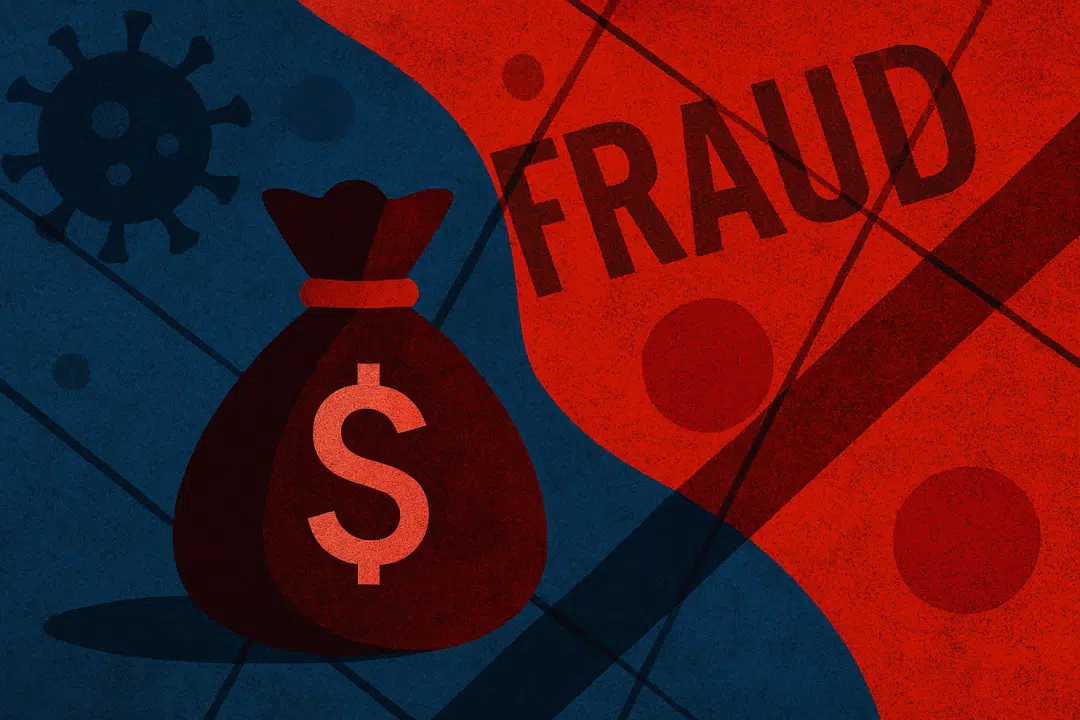The federal government has lost over $400 billion to fraud, waste, and abuse during the COVID-19 pandemic, according to a new report from the Special Committee on Pandemic Programs. The losses span small business loans, unemployment assistance, and economic recovery checks. This makes it one of the largest fraud scandals in U.S. history.

Small Business Loan Programs Became Easy Targets
Scammers took advantage of the Paycheck Protection Program (PPP) and the Economic Injury Disaster Loan (EIDL) program. These relief programs were meant to deliver quick funds to struggling businesses. But the lack of verification and loose controls created a goldmine for fraudsters.
According to the Small Business Administration’s Inspector General, $200 billion—about 17% of all disbursed funds—went to questionable recipients. In many cases, applicants inflated payroll numbers, used stolen identities, or invented fake businesses to get money.
One fraud ring submitted 75 fake PPP applications and received $20 million. In another case, a man from California used false documents to collect $27 million, which he spent on luxury items.
RELATED: See how to claim pandemic-era stimulus checks before the deadline.
Unemployment Programs Lost Nearly $200 Billion
Unemployment Insurance (UI) programs across the country suffered similar abuse. Fraudsters filed claims using identities of deceased people, incarcerated individuals, or stolen Social Security numbers. Between 2020 and 2023, these programs lost around $191 billion.
Criminals didn’t work alone. International cybercrime groups coordinated much of the fraud. For example, one group linked to the Chinese government reportedly stole $20 million from U.S. relief programs. Another ring, known as Scattered Canary, filed nearly 200 false claims in a single state.
Oversight Agencies Failed to Stop the Bleeding
Federal agencies such as the SBA, Department of Labor, and Treasury failed to coordinate their efforts. In the rush to send out aid, agencies skipped key safeguards like checking the Treasury’s “Do Not Pay” list. Officials also allowed applicants to self-certify eligibility, making fraud detection difficult.
Many watchdogs, including the Pandemic Response Accountability Committee (PRAC), later admitted that their systems weren’t prepared for the scale or speed of COVID-19 relief spending.
Thousands Charged, But Most of the Money Is Gone
Law enforcement has charged over 3,000 people for pandemic-related fraud. Some defendants bought luxury cars, mansions, or cryptocurrency. One scheme allegedly used federal funds to pay a hitman. But despite ongoing investigations, officials believe most of the stolen money may never be recovered.
Investigators say they still uncover new schemes every week. However, the recovery rate for stolen funds remains low, and many of the fraudsters likely laundered the money through shell companies or offshore accounts.
What’s Next: Fixing the System
The committee urged Congress to pass new safeguards for emergency spending. Lawmakers are considering legislation to centralize verification systems, strengthen fraud-prevention tools, and improve data sharing between agencies. Without changes, experts warn that future relief efforts could fall victim to the same loopholes.
Bottom Line
The federal government lost more than $400 billion in pandemic relief—money that was meant for families, small businesses, and workers. Weak oversight, slow coordination, and outdated systems allowed scammers to exploit the system at an unprecedented scale.
As new policies take shape, this report will likely serve as a warning for future crisis responses—and a reminder that good intentions alone aren’t enough to stop fraud.
